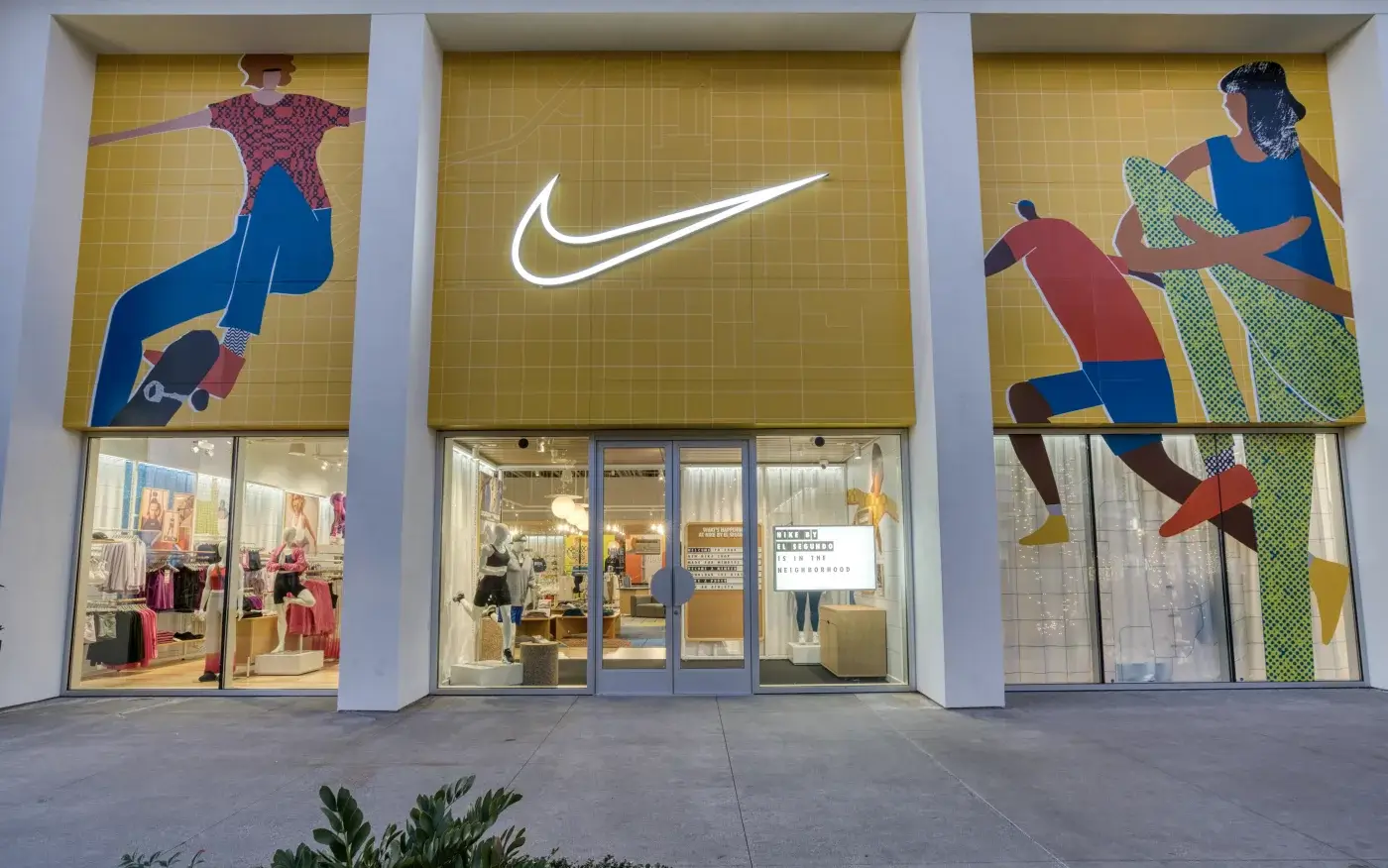Exterior signage is your brand’s calling card to the world. It’s a simple element with a massive impact, a visual cue that tells people who you are, what you stand for, and what they can expect inside. In this blog, we dive into why exterior signage matters and how it works.
A-Pillar of Brand Identity
Signage is a cornerstone of effective branding. Exterior signage should reflect your business’s personality, value, and promise. It should be as unique as the brand itself. Take for example the simple yet impactful exterior signage of Bubbletease. Bubbletease’s exterior sign features its name and green leaf logo. Its use of color, typography, and positioning showcases its down-to-earth personality in a way that appeals to the brand’s target customers—avid bubble tea fans looking for an experience beyond just drinking tea.
Its main signage is displayed front and center of the tea bar in channel lettering form, which provides a clean look with a 3D texture. Additionally, due to the dimensional depth, this type of sign also gives a high level of readability. The same goes for its smaller blade sign. The playful use of “bb” instead of the bubble in the wordmark feels friendly, while the vibrant green logo, speaks to its value of fresh, quality ingredients. Bubbletease also uses window graphics to display its unique messaging with signs that read, “We believe that it starts with a careful brew”, for example. Because these signs are positioned at eye level, they ensure prospects and customers passing by can easily locate the business and understand what it offers.
Image Source: SLD
Increase Brand Recognition
When customers see consistent use of logos and imagery across all platforms—digital and physical— they begin to associate these elements with your brand. Distinctive signage also helps customers identify your business among a sea of competitors. The more recognizable your brand is, the more familiarity and trust it builds with your customers.
Tbooth Wireless uses its signage to set the tone for its retail environment. The combination of its logo and its signature bright pink color is made to inspire customers with a feeling of calmness. Matching colored accents are also applied across the store, including the seating. The strategic integration of these design elements throughout various touchpoints is what creates a cohesive customer experience and at the same time, strengthens brand recall among customers.
Image Source: SLD
Become a Part of The Community
Exterior signage can act as a vital connector between a brand and the community. High-quality signage that enhances the local environment signals a commitment to the community. It shows that the business values its place in the neighborhood and contributes positively to the visual landscape.
Nike’s south LA store signage is designed to show that the brand is not only aware of the community’s heritage but also an active participant in its growth. By incorporating local heroes, cultural symbols, and, artistic elements, Nike connects its global brand identity with the neighborhood’s unique character. Its signage includes artistic depictions of influential figures from the local sports scene, such as athletes who grew up in South LA. In collaboration with local artists, the store’s signage also includes murals that depict the community’s history and culture. The vibrant large-scale artwork references African American and Latino heritage, using bold colors, and intricate designs that mirror the street art often seen around the city. This community-focused design approach turns signage into a symbol of belonging, positioning Nike as a brand that does more than sell shoes, it uplifts the local culture.

Image Source: Nike Official Website
Maximize Effectiveness: Location and visibility
Exterior signage must be easily legible, from varying distances and in different lighting conditions. Choose fonts that are clean and sharp. The size of the text should scale with the viewing distance. High contrast between the background and textures ensures readability. Avoid color combinations that blend or cause eye strain, such as red on green or yellow on white. It’s also important to keep the message short and direct. Your signage should convey its message in as few words as possible. Brevity guarantees your sign is easy to spot, especially when viewed at a glance.
Additionally, where a sign is positioned is also just as important as how it looks. Think about sight lines, traffic patterns, and natural focal points. For pedestrian-heavy areas, consider adding lower-mounted eye-level signage. For busy roadways, a larger elevated sign might make the most sense. The location also determines the type of sign you need. In more dense, urban neighborhoods, a projecting or blade sign that juts out perpendicular to the building can cut through visual noise better than a flat-mounted sign. In more of a rural area, a monument sign closer to the ground may work better.
Utilizing Lighting for Greater Impact
Good exterior signage doesn’t disappear when the sun goes down. Properly executed lighting can make your signage visible in low-light conditions. It effectively extends your operational hours, ensuring your brand is seen and noticed day and night. This is particularly important for businesses that operate during the evenings or are located in busy high-traffic areas.
Region’s Bank exterior signage is a bright example of this. Its signage is prominently displayed atop its storefront. Its bright green rectangular logo features LED backlighting, ensuring it remains legible to customers and passersby even at night. The branch is also designed to create a sense of transparency with large windows and bright lights that showcase digital signage and its 24-hour ATM services.

Image Source: SLD
Conclusion
The goal of exterior signage shouldn’t just be seen but felt. Exterior signage does more than just mark your location, it creates an emotional connection with potential customers. The right signage draws people in, makes them feel something, and, most importantly, compels them to take action, whether that’s stepping inside, making a purchase, or simply remembering your brand for future visits.


